

2025.01.31
Nestled along the Chikugo River in southern Fukuoka, Okawa is Japan’s hub for fine wooden products, textiles, pottery, and artisanal craftsmanship, boasting a heritage that spans nearly five centuries. Its woodworking culture, supported by local timber, has nurtured generations of skilled artisans who meticulously create Kumiko latticework and furniture, each piece reflecting the rich traditions of this charming hidden gem.
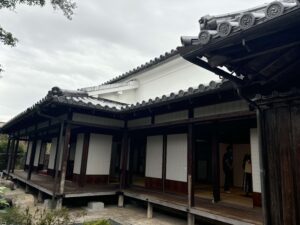
Preservation and Transformation of Traditional Houses
In recent years, Okawa has undertaken an approach to preserving its cultural heritage. The town’s streets are dotted with historic wooden houses, some dating back centuries, showcasing traditional Japanese architectural styles. To encourage tourism and share this heritage with a wider audience, several of these old houses have been carefully transformed into charming hotels and guesthouses. By repurposing these historical buildings, Okawa maintains its character while providing visitors with an immersive experience. This initiative not only conserves the town’s architectural legacy but also invites tourists from around the world to engage more deeply with its cultural roots.
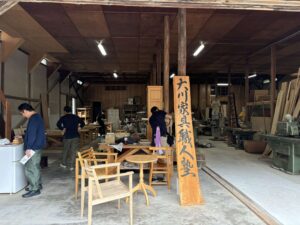
The Legacy of Okawa’s Wood-Making Industry
The heart of Okawa’s identity lies in its distinguished history of woodworking. The industry traces its origins to ancient times when local craftsmen began producing wooden items to meet domestic demand. Over time, this craft evolved and gained national recognition, establishing Okawa as one of Japan’s leaders in high-quality wooden furniture. Today, the town is recognised for their meticulous craftsmanship and use of premium local materials, creating furniture that balances durability and functionality with elegant minimalist designs.
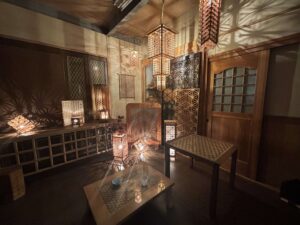
Unique Cultural Experiences and Craftsmanship
Okawa also offers visitors the chance to engage directly with its rich cultural traditions through hands-on experiences in woodworking and traditional arts. Among one of most cherished of these crafts is Kumiko, a refined Japanese woodworking technique that involves assembling small pieces of wood without nails or adhesives to create intricate latticework patterns. Local artisans welcome visitors to learn this artistic skill, guiding them through the process, which requires patience and attention to detail. Additionally, workshops in wood carving, lacquer work, and other crafts are available, allowing tourists to create their own unique pieces and gain a greater appreciation for the craftsmanship behind Okawa’s famous products.
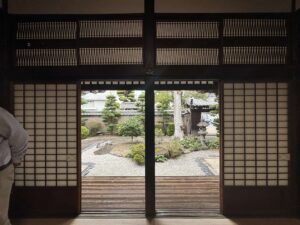
A Vision for the Future of Okawa
While the charm of Okawa lies in its timeless dedication to crafts, the town is also looking towards the future by seeking ways to attract more international attention. Beyond transforming traditional homes into accommodations, Okawa’s leaders are exploring ways to broaden its appeal through media and tourism outreach. By promoting Okawa’s unique history and artisanal heritage, the town hopes to attract culturally curious visitors who wish to explore Japan beyond the typical tourist destinations. With increased visibility, Okawa could become a destination for those seeking an authentic, hands-on experience of Japanese arts and crafts.
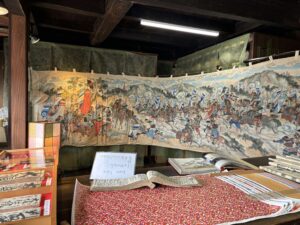
One of the most impressive highlights of Okawa is the stunning 10 metre curtain crafted by the Nakamura family in 1922. This piece of textile vividly depicts the historic Battle of Sekigahara from 1600, featuring around 70 samurai figures brought to life through beautiful colours. The vibrant hues and meticulous attention to detail make each warrior stand out, resembling a cinematic scene. Beyond its visual allure, the curtain carries a profound symbolic meaning: it was created as a heartfelt wish for the family’s son to grow up healthy and strong. This piece serves not only as a historical tribute but also as a powerful expression of the family’s hopes and values, passed down through generations.

Another highlight worth mentioning is the breathtaking view of the Chikugo River Lift Bridge, illuminated against the night sky in a vivid red glow. This iconic bridge, an interesting feat of industrial architecture, stands out with its bold and almost futuristic design—one onlooker even compared it to a scene from the anime Gundam.
My experience in Okawa left me with a deep appreciation for the town’s unique charm and rich cultural heritage. The combination of traditional craftsmanship and artistry is truly captivating, and the dedication of the local artisans to preserving their woodworking legacy is inspiring. From the stunning Kumiko latticework to the intricate wooden furniture, each piece tells a story that reflects the town’s history and values. I was particularly moved by the warmth and hospitality of the community, which made my visit feel personal and enriching. Overall, Okawa is a hidden gem that offers a profound insight into Japan’s artistic traditions and the spirit of its people.